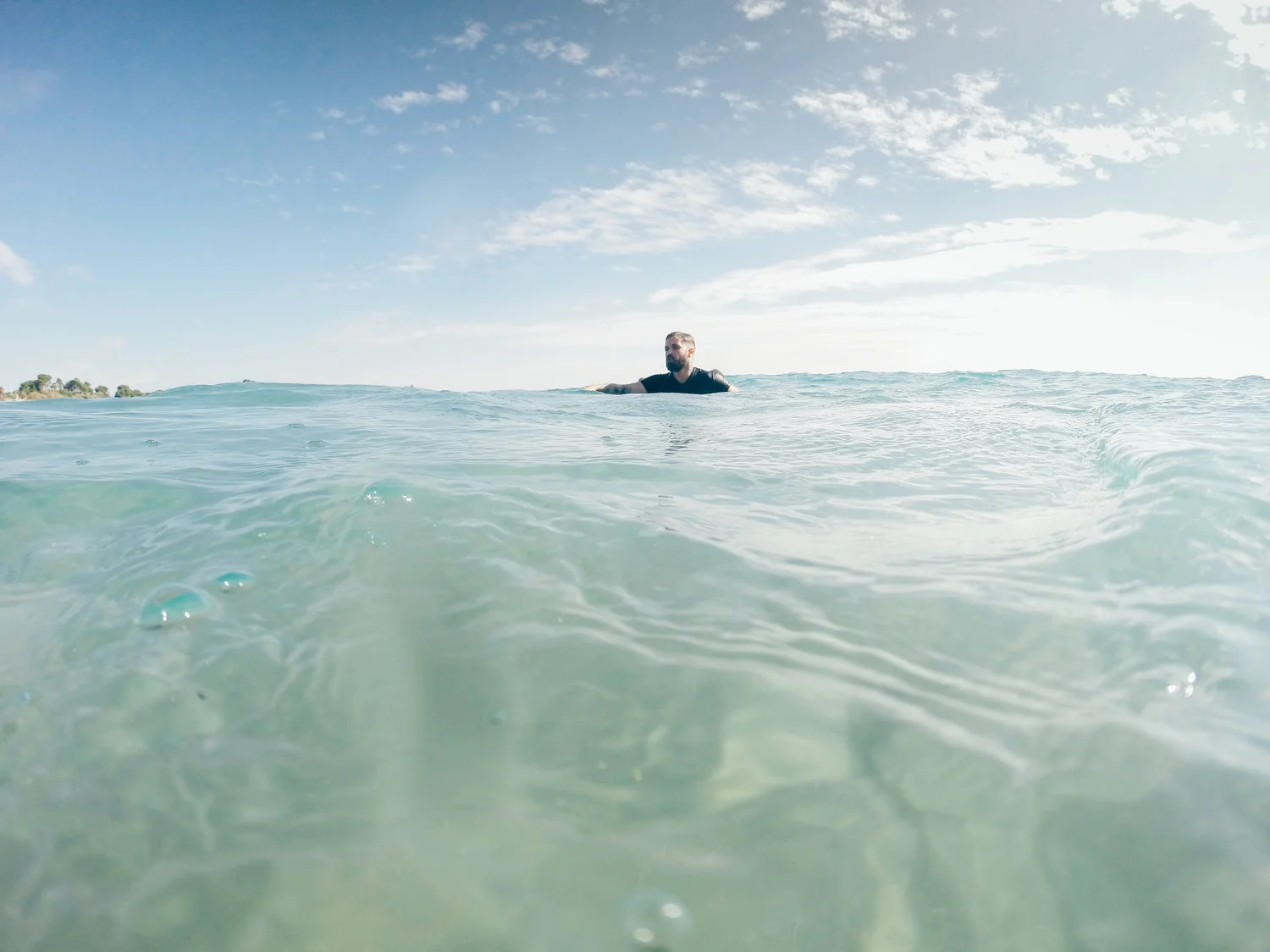More than 25 million people have forcibly left their homes. Most are unable to return to their countries out of a well-founded fear of persecution for race, religion, nationality, membership of a particular social group, or political opinion reasons.
Since 2015 «The Miracle» project created by artist Abel Azcona has been carried out in twenty-four locations and beaches in the Mediterranean Sea. From Marseille to Lesbos, passing through Nice or Palermo. A performative and installative project where the artist seeks a first-person reflection imbued with social criticism. More than two thousand people have actively participated in the actions, all of them walked for hours in their cities, to symbolically end up inside the water until they were covered by it.
Each of the participants has made an internal journey in the performance in order to empathize with one of the horrors that has caused the most fatalities in the last decade. Thousands of bodies of women, men and children have perished in the seas without any recognition or feeling of guilt for an anesthetized and cruel society. With this artistic work, the participants carried out a first-person process that lasted several hours, ending up on the beach forming an installation of hundreds of bodies, without ever losing all the real victims from their memories. This action was born as a tool for empowerment, criticism and joint fight.
The first of the actions was carried out with thirty volunteers in the city of Tarragona on October 14, 2015 and the action was reactivated in twenty-four different cities until it was closed with one last performance in 2017, with almost one hundred people touring the city of Tarragona again. People of more than fifteen different nationalities. American, Finnish, Swedish, Australian, French, Mexican, English, Spanish, Filipino, Italian, Moroccan, Syrian, Dutch, Colombian and Argentine walkers denounced with their own floating bodies in the Mediterranean water, as a symbol of union and empowerment. This latest performance designed and created jointly by artist Amanda Palmer and artist Abel Azcona together with all the participants, was part of the audiovisual project of both artists in tribute to Aylan Kurdi.
________________________
Más de 25 millones de personas han abandonado su hogar a la fuerza. La mayoría no pueden regresar a su país de origen por un temor bien fundado a la persecución por motivos de raza, religión, nacionalidad, pertenencia a un grupo social determinado u opinión política.
Desde el 2015 el proyecto «El Milagro» creado por el artista Abel Azcona ha sido realizado en veinticuatro localizaciones y playas del mar Mediterráneo. Desde Marsella hasta Lesbos, pasando por Niza o Palermo. Un proyecto performativo e instalativo donde el artista busca una reflexión en primera persona impregnada de crítica social. Más de dos mil personas han participado activamente en las acciones, todas ellas caminando durante horas en sus ciudades de origen, para terminar de forma simbólica en el interior del agua hasta ser cubiertos por la misma.
Cada uno de los participantes ha realizado en la performance un viaje interno con el fin de empatizar con uno de los horrores que más víctimas mortales ha causado en la última década. Miles de cuerpos de mujeres, hombres y niños han perecido en los mares sin ningún reconocimiento ni sentimiento de culpa por una sociedad anestesiada y cruel. Con esta obra artística, los participantes realizan un proceso en primera persona de varias horas de duración, hasta terminar en la playa formando una instalación de cientos de cuerpos, sin perder en ningún momento a todas las víctimas reales de su memoria. Esta acción nace como una herramienta de empoderamiento, crítica y lucha común.
La primera de las acciones se desarrolló con treinta voluntarios en la ciudad de Tarragona el 14 de octubre de 2015 y la acción se reactivo en veinticuatro ciudades diferentes hasta cerrarse de nuevo en una última performance en 2017, con casi cien personas recorriendo de nuevo la ciudad de Tarragona. Todos ellos, de más de quince nacionalidades diferentes. Caminantes estadounidenses, finlandeses, suecos, australianos, franceses, mexicanos, ingleses, españoles, filipinos, italianos, marroquíes, sirios, holandeses, colombianos y argentinos denunciaron con sus propios cuerpos flotantes en el agua del mediterráneo, como símbolo de unión y empoderamiento. Esta última performance diseñada y creada en común por la artista Amanda Palmer y el artista Abel Azcona junto a todos los participantes, formó parte del proyecto audiovisual de ambos artistas en homenaje a Aylan Kurdi.
“In”El Miracle”, Abel Azcona proposed an introspective and almost initiatory journey, through a collective performance on the paths of freedom. The search for which leads millions of people, who have lost almost everything, to endanger the only thing they have left, their lives. To walk towards new horizons they hope will be kinder than those left behind.
But, “El Miracle” by Abel Azcona, goes a little further. It made us think that most of us have also walked looking, at some point in our lives, for a permutation, a word, a kind welcome when we have changed the orientation of our expectations. The participants in the performance made a journey with the artist that began in The Grey Square, up to the Miracle beach in the city of Tarragona.”
“En “El Miracle”, Abel Azcona nos propuso un viaje introspectivo, y casi iniciático, a través de una performance colectiva por los caminos de la libertad. La búsqueda de los cuales lleva a millones de personas, que tienen casi todo perdido, a poner en peligro lo único que les queda, sus vidas. Caminar hacia nuevos horizontes que esperan sean más amables que los que dejaron atrás.
Pero, “El Miracle” de Abel Azcona, va un poco más allá. Nos hizo pensar, que la mayoría de nosotros también hemos caminado buscando, en algún momento de nuestra vida, una permutación, una palabra, un recibimiento amable cuando hemos cambiado la orientación de nuestras expectativas. Los participantes de la performance realizaron con el artista un recorrido que comenzó en The Grey Square, hasta la playa del Miracle en la ciudad de Tarragona.”
“La caminata, los diarios de viajero, bitácoras de navegación, diarios de campo y relatos personales; forman parte de un sistema de registro que va desde lo histórico, científico, hasta lo literario y personal. En lo relativo al tema de la caminata releo y pienso a Henry David Thoreau, ofreciendo un íntimo vínculo de la caminata en la naturaleza con una mirada crítica y tintes políticos. El explorador Alexander Von Humboldt piensa del hombre en movimiento como «un sujeto dinámico y políticamente activo que antes de verse como miembro de la sociedad, se reconoce como habitante, parte y elemento del mundo en el que vive.» La caminata será esta posibilidad de un vínculo más íntimo y profundo con esa naturaleza de la que se nos ha desvinculado. También existe la figura del sauntering (Saint – Terree / saunterer) o figura del errante, que nutre el imaginario de esos cuerpos estigmatizados que nunca alcanzarán la Tierra Santa por más que su caminar busque orientarse, siempre algo los desviará. Así más terrible será el contraste que presenta David Le Breton al recuperar la figura del “caminante privilegiado del turismo” vs el migrante, el desplazado y el “sin tierra”. La caminata diferenciada del que intenta huir de los diversos escenarios de violencias. El tema de los flujos humanos aparece en el ensayo de Rebeca Solnit -dedicado a la historia del caminar- narra los procesos de privatización del terreno y la gradual sustracción de la caminata como acto deportivo, desprovisto de su carácter político, emancipatorio y estético. Errante, peregrino y migrante, tienen algo de malditos, abyectos sin lugar, expulsados, precarios y fuera de todo marco. Condenados a no pertenecer, no tener lugar y no detenerse, haciendo suya la idea del Lute, «Todos caminan para no reventar y para no morir.»”
Videos of the first performance in October 2015 and the last one in the year 2017 as part of the video piece and collaboration with Amanda Palmer. Both videos part of the complete piece “The Miracle”.
Videos de la primera performance en octubre de 2015 y la última en el año 2017 como parte de la pieza de video y colaboración con Amanda Palmer. Ambos videos parte de la pieza completa “El Milagro”.
“The walk, the traveler’s diaries, navigation logs, field diaries and personal stories; They are part of a registration system that goes from the historical, scientific, to the literary and personal. Regarding the theme of the walk, I reread and think of Henry David Thoreau, offering an intimate link of the walk in nature with a critical view and political overtones. The explorer Alexander Von Humboldt thought of men in movement as “a dynamic and politically active subject who, before seeing himself as a member of society, recognizes himself as an inhabitant, part and element of the world in which he lives.” The walk will be this possibility of a more intimate and deep link with that nature from which we have become detached. There is also the figure of the sauntering (Saint - Terree / saunterer) or figure of the wanderer, who nourishes the imaginary of those stigmatized bodies that will never reach the Holy Land, no matter how much their walk seeks to orient themselves, something will always lead them astray. The contrast that David Le Breton presented when recovering the figure of the “privileged tourist walker” vs. the migrant, the displaced and the “landless” is more terrible. The differentiated walk of the one who tries to flee from the various scenes of violence. The subject of human flows appears in Rebeca Solnit’s essay - dedicated to the history of walking - narrates the processes of land privatization and the gradual removal of the walk as a sporting act, devoid of its political, emancipatory and aesthetic character. Wandering, pilgrim and migrant, they have something cursed, abject, expelled, precarious and out of all frame to them. Condemned not to belong, not to take place and not to stop, endorsing the idea of El Lute, «Everyone walks so as not to burst and not to die.»”
“The work was exhibited in its entirety in The Grey Square in the city of Tarragona with more than 1000 kg of sand from the same beach as the action. Photography and Video: Polarizador Estudio and Rubén Perdomo.
La obra fue expuesto de forma completa en The Grey Square en la ciudad de Tarragona con más de 1000 Kg. de arena de la misma playa de la acción. Fotografía y Video: Polarizador Estudio y Rubén Perdomo.
Filming and documentation process of the last performance in the city of Tarragona, 2017.
Proceso de rodaje y documentación de la última performance en la ciudad de Tarragona, 2017.
A space of a few square meters witnessed a cathartic rite of personal search around fear, abuse and abandonment. All the participants reflected through the body and the word unfinished processes of crossed feelings with themes such as mental or physical illness, abuse or the absence of family.
An introspective construction, which somehow ended with a journey to the sea. Inside, each one of them worked a liberation from this process that ended in the water or perhaps started in it in a different way. An exhibition that invites us spectators to walk and reflect about a human conflict and why not, a much more personal conflict.
Un espacio de pocos metros cuadrados fue testigo de un rito catártico de búsqueda personal en torno al miedo, al abuso y al abandono. Todas las participantes reflejaron mediante el cuerpo y la palabra procesos inacabados de sentimientos cruzados con temáticas como la enfermedad mental o física, el maltrato o la ausencia de familia. Una construcción introspectiva, que de alguna forma terminó con un recorrido hasta el mar. En el interior, cada uno de ellos, trabajó una liberación de este proceso que terminó en el agua o quizás comenzó pero de una forma diferente. Una muestra que nos invita a los espectadores a caminar, reflexionar y “mojarnos” en torno a un conflicto humano y porque no, a un conflicto mucho más personal.
Photographs of The Miracle in different cities and exhibition with all the processes, the installation with sand from different locations and testimonies of different refugees and guests.
Fotografías de El Milagro en diferentes ciudades y exposición con todos los procesos, la instalación de arena de diferentes localizaciones y testimonios de diferentes refugiados e invitados.





































































































































































































